THE THIN RED LINE Explained. It Is Not a War Movie
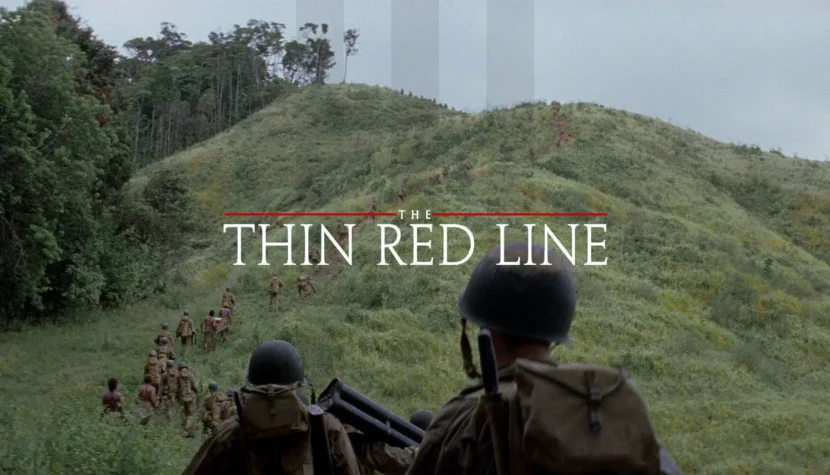
…catching sight of a friend’s torn body out of the corner of one’s eye—the same friend with whom for two years you shared a table, confided your sorrows, fears, and hopes? Is there any situation where the question of God’s existence becomes more pressing? How can one find God’s spark amid the countless flashes coming from the enemy’s guns? It’s so easy to be mistaken, to lose faith, to go mad. Is it even worth thinking anymore?
Since we’ve become more cruel than animals, shouldn’t we, like them, act only on instinct? Forget about the sunlit, naked body of a girl thousands of kilometers away, about the children waiting for their father’s return, about the lofty ideals trying to explain the sense of participating in a massacre. Just push forward, dodge speeding pieces of metal, hide, and kill other animals fighting for their territory. To die blissfully without the burden of memories, without the weight of moments that force us into a compulsive fight for every extra second, every shallow breath. The thick grass of Guadalcanal offers no such respite. It is filled with memories, hopes, uncertainty, and the fear of the end, because here the living and the dead are separated only by The Thin Red Line, stained with the blood of both enemies and friends.
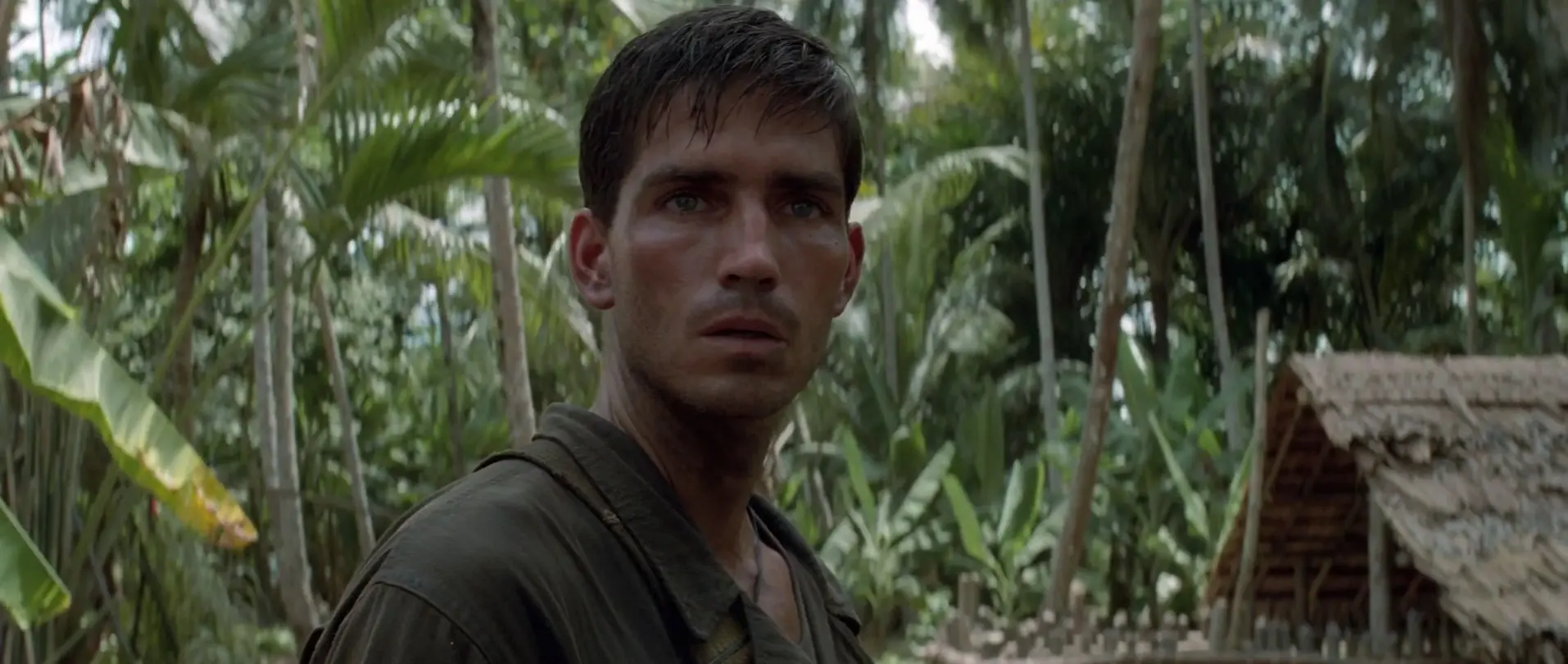
When Malick returned to cinema after a twenty-year hiatus, the industry went wild. The legend of Badlands and Days of Heaven had not waned, and many influential critics placed the director’s first two films at the top of their personal rankings. After the release of The Thin Red Line, some claimed that Malick himself had gone mad. His supposed madness could be seen on many levels. The first cut of the film, sent to producers at 20th Century Fox, ran close to six hours. Naturally, no one could agree to release such an extensive work. The grueling editing process began. After cutting it down to three hours, many scenes featuring well-known actors were removed. Malick completely cut out sequences with Bill Pullman and Mickey Rourke, significantly reduced the roles of others like Adrien Brody. Big names like Clooney and Travolta appeared for just a minute or two. Malick knew he could have anyone on set—but he didn’t have to. All this production chaos faded in comparison to the film’s final result. The Thin Red Line in 1998 collided with Steven Spielberg’s Saving Private Ryan. While Spielberg’s film, starring Tom Hanks, impressed with its technical prowess, it was essentially a classic American narrative that glorified heroism and was made to uplift spirits. The Thin Red Line was something entirely different. Many war film enthusiasts couldn’t accept it.
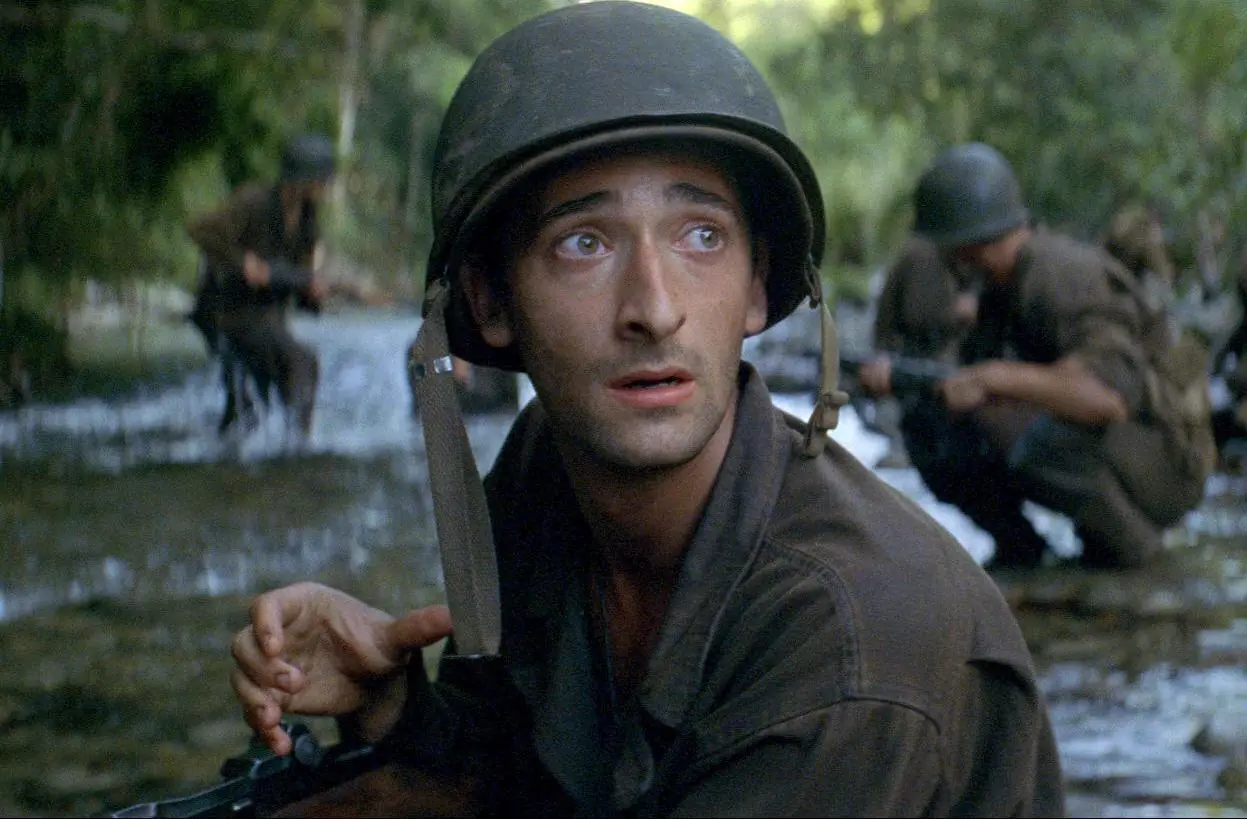
James Jones’ readers, the author of the novel on which the film was based, had their objections as well. His almost journalistic recollections were not treated literally; instead, they became the foundation upon which Malick built his own vision (Michał Oleszczyk even notes that The Thin Red Line is essentially an adaptation of not one but three of Jones’ war novels, as the director juggles characters and themes throughout the author’s war trilogy). Thus, The Thin Red Line is not a war film in the strictest sense of the word, as Malick is not interested in battle scenes. He’s uninterested in war mythology full of heroes, medals, and patriotic declarations. War, for him, is merely a pretext for asking the questions that appear in all his films. There is one shot where blinding sunbeams pierce through leaves eaten away by insects. This is essentially the visual summary of the entire movie. It’s not as obvious as it might seem, as it’s not just about a silent God watching over a world humans are destroying. The sight of a sick plant raises many more questions. However, all of them concern man, as in one aspect Malick has no doubts: God is accessible only through introspection, through deep and sincere self-reflection. The spark is within us, but does it fade when an enemy’s bullet finally catches up?
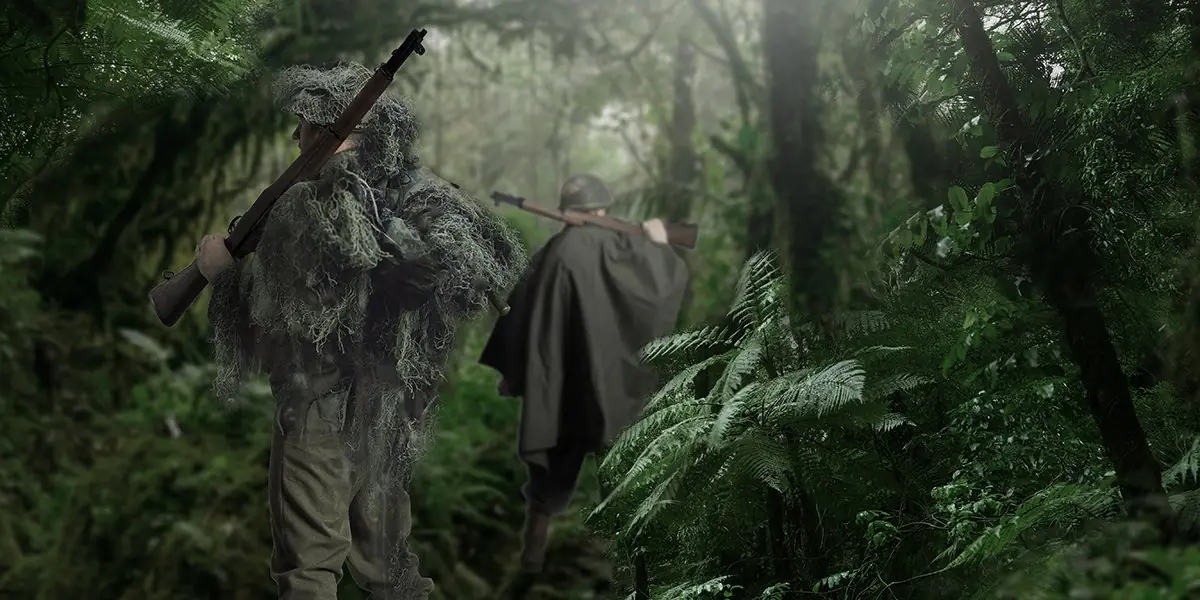
Sudden explosions, groans, and the shrieking sound of metal tearing through air in Malick’s world are substitutes for doubt. How can one continue to trust, to believe, when death toys with humans in such a cruel, senseless way? This is the stance of Welsh (played by Sean Penn), who uses his hardened realism as a shield to protect himself from the demons of war. In the film’s prologue, it seems there are no cracks in his intellectual armor, that war could only defeat him through a stray bullet or grenade explosion. After the pacification of a Japanese village, we see that Welsh’s shield is full of cracks, and by the end, we foresee its complete destruction. Emotions overpower intellect when Penn kneels by the symbolic grave of an ideological opponent who has become his most faithful friend. He kneels and cries, asking where his God has gone.
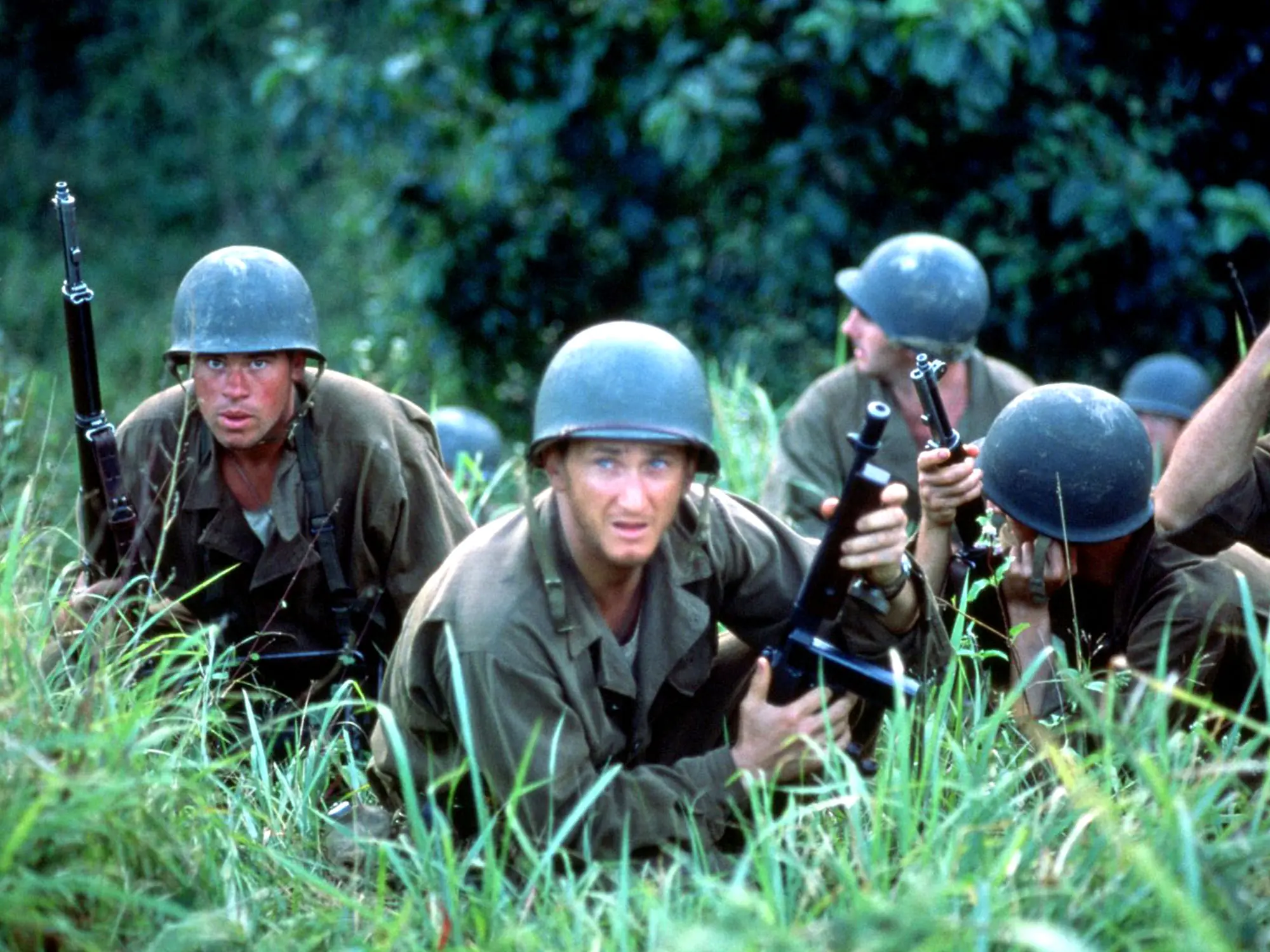
Witt (played by Jim Caviezel) is an enigma. War, for him, is complete nonsense, and the army and the symbolic foundation created to convince soldiers that risking their lives is worthwhile—a farce. Witt finds meaning among the Melanesian natives he lived with after deserting his unit. His exchange with Welsh lays the foundation for the entire The Thin Red Line. Behind Welsh’s intellectual wall and Witt, who willingly tore down his own wall. Reason versus sensitivity, instinct, and faith. Many critics accuse Malick of sermonizing, like delivering homilies from a pulpit. Yet, by simply observing the relationship between these two soldiers, one can see that Malick’s filmic prayers are far from the mindless recitations found in canonical texts. While The Thin Red Line, like all of Malick’s films, is in a sense a confession of faith, it is a faith full of questions and doubts that—perhaps paradoxically—make it even stronger, even more fervent. It’s easy to believe without asking questions, but true faith is born from doubt.
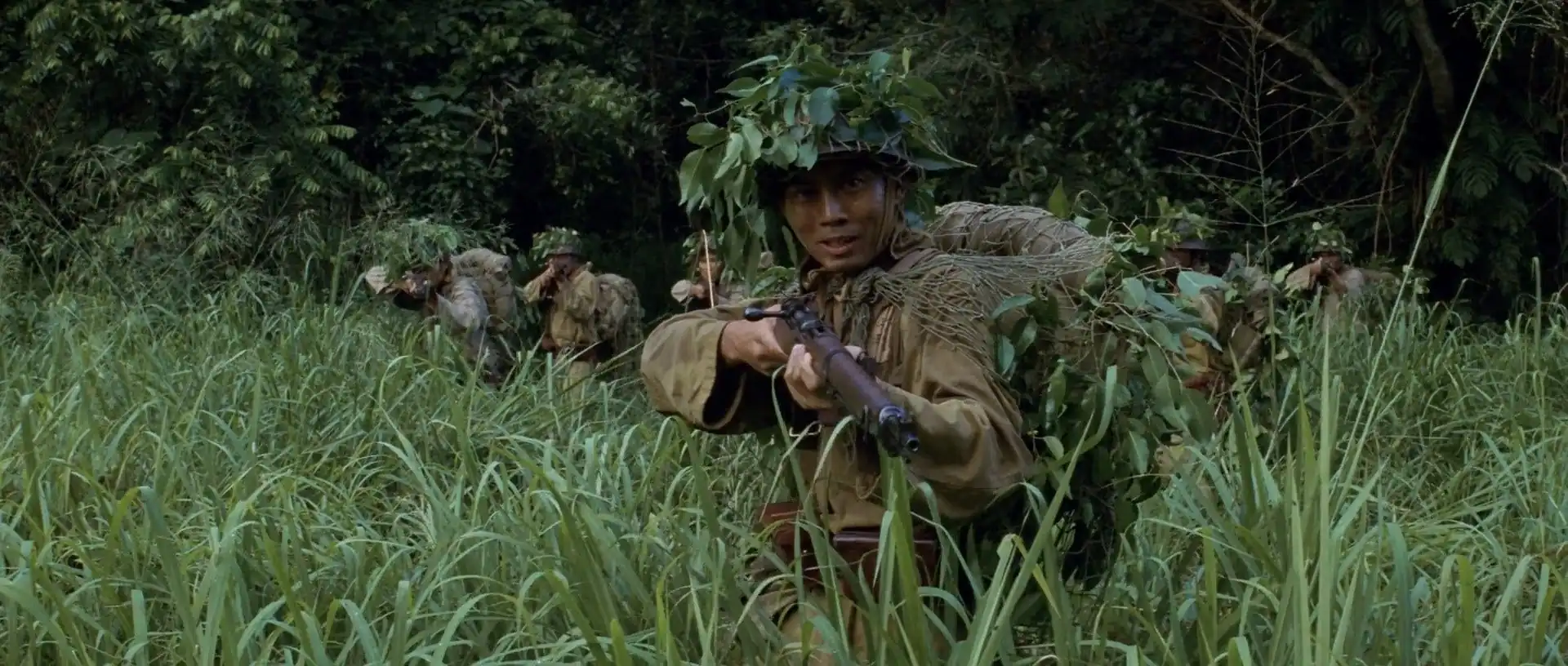
Malick’s world is always constructed with a certain degree of convention. To appreciate his cinema, one must accept its rules. His films, including The Thin Red Line, often tread a fine line between intellectual depth and banal philosophy. The story of soldiers capturing Guadalcanal is also not without its tropes that might irritate and turn viewers away from the intimate, internal battles of individual characters or, closer to the truth, the polyphonic voice of a collective hero. The stark contrast between nature and civilization may annoy some, as it clearly favors the former. The camera often focuses on lush vegetation and exotic fauna, while the blinding sunlight frequently breaks through the treetops, referencing certain obvious contexts given Malick’s chosen perspective. The depiction of the Melanesian tribes, before the conflict between Americans and Japanese escalates, presents them as untouched by the evil of Western civilization. Malick, whether consciously or not, falls into the metaphor of the noble savage, who loses his natural innocence upon contact with outsiders. In the face of omnipresent death, the narrator’s questions may also seem trivial, as the battlefield doesn’t seem the right place for pondering life’s fundamental questions, which, despite their weight, always carry a certain degree of banality.
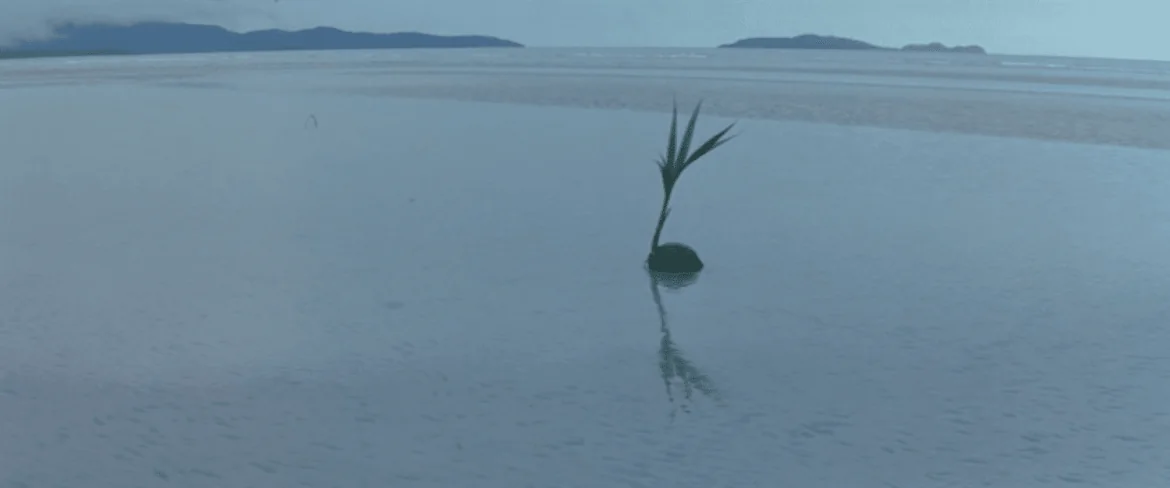
Should we avoid such questions, though? Can they only be asked in silence, dozing off over yet another weighty tome of someone else’s thoughts? No. Malick isn’t afraid of critics who continually detect the presence of the Holy Spirit among his films’ producers. He’s not afraid to ask the questions that today’s intellectuals simply don’t dare to, because of postmodernism, the collapse of grand narratives, the focus on fragments instead of attempts to understand the whole. Yet, he cannot be called a naïve believer who topples academic dissertations with seemingly simple questions. That would be a significant overstatement. Malick consciously employs fairly obvious metaphors, but symbols in his films are never presented without being embedded in a broader context, often stripping them of their surface qualities.
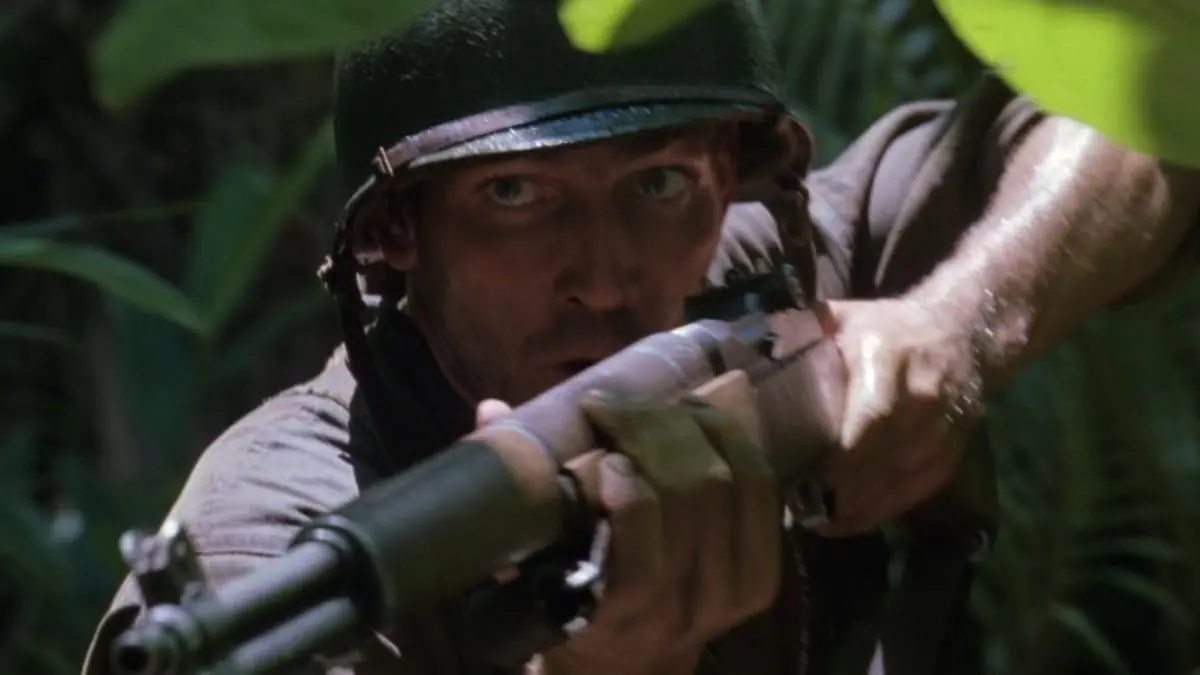
The seemingly pure nature of The Thin Red Line is also at war. Among the Guadalcanal swamps live not only paradise birds but also reptiles waiting to sink their teeth into warm flesh. Dogs tear at soldiers’ corpses, vultures wait for the victorious to leave the fallen behind in the grass. Trees struggle with pests, and unknown diseases consume them. So, is nature really that different from civilization? The final shot of The Thin Red Line clarifies much in this regard. The relationship between Welsh and Witt works in the same way. At the beginning of the film, they seem like two radically different personalities, almost cardboard cutouts, brushing up against clichés. By the end, there are no illusions. Neither character remains steadfast, and their initial stances have evolved. A straightforward interpretation of their behaviors and intellectual-emotional evolution is impossible. But that doesn’t trouble Malick, as faith doesn’t need interpretation.
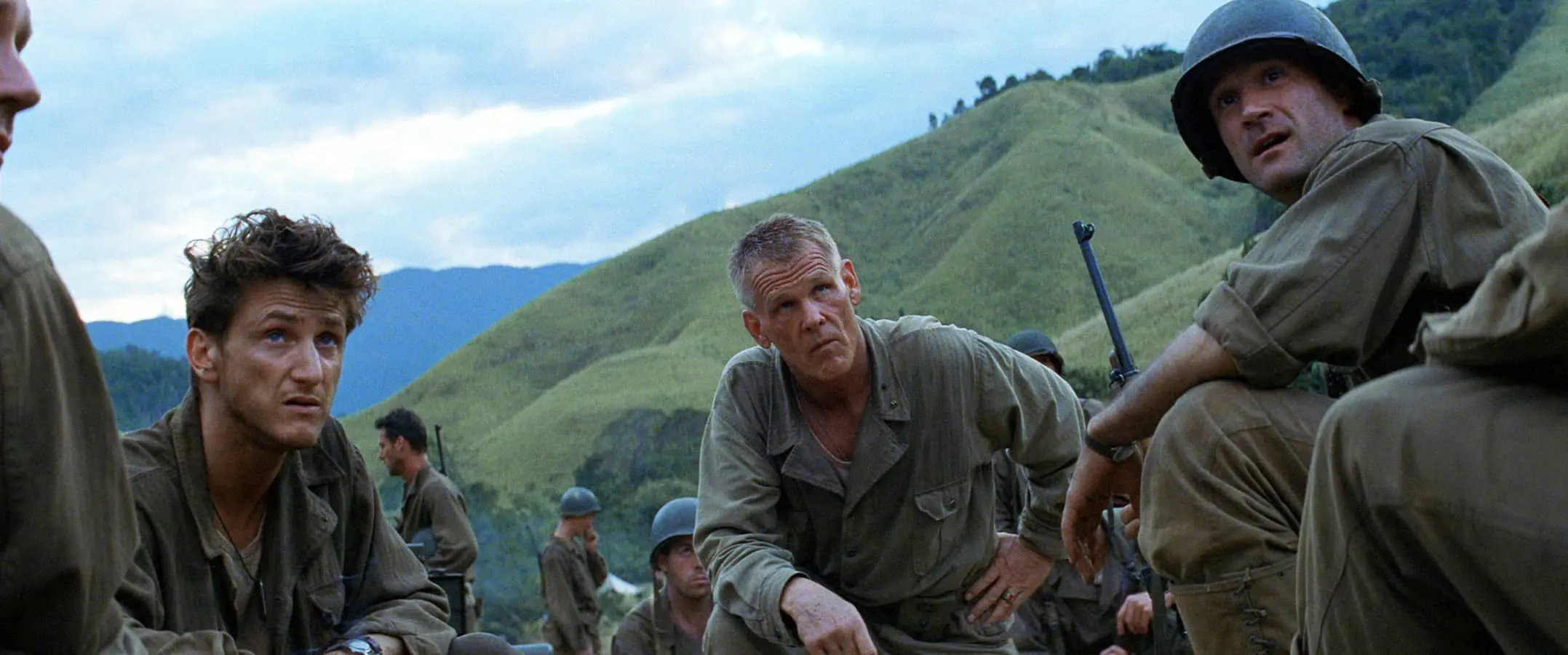
The Thin Red Line is not a film about war. Nor is it entirely about the men who must grapple with its horrors. Malick uses these extraordinary, extreme moments that turn the world upside down to ask questions about the human condition, about humanity’s role in the perpetual struggle between good and evil. Most of the questions remain unanswered, and it’s unclear where we should even look for the sides of this eternal conflict. Yet Malick doesn’t seek answers. He simply asks, meditates, reflects, and gazes at the sky with trust.

